Cellular communications: history of emergence and development. Cellular communications in Russia. History of the development of cellular communications
Throughout its history, humanity has experienced an urgent need for means of quickly transmitting information over long distances. At the dawn of civilization, various primitive methods were used for this - signal fires, drums, homing pigeons, etc. With the development of science, these technologies became more and more improved - the invention of electricity over time made it possible to connect objects located at great distances with wires and exchange between objects almost instantly them with quite decent amounts of information. This was a very great achievement, but the location of subscribers was strictly fixed, which sometimes created great inconvenience.

The first step towards the advent of mobile communications was the discovery in 1888 by German physicist Heinrich Hertz of electromagnetic radio waves and finding a way to detect them. A little later, the Russian scientist Alexander Stepanovich Popov, relying on the results of G. Hertz’s research, created a device for recording electrical vibrations - the first primitive radio receiver.
A start was made and in 1901 the Italian Guglielmo Marconi installed a radio-receiver-transmitter on board a steam car and carried out the first land-based mobile communications. At the same time, it was possible to transmit only data (dot-dash), but not voice. However, it was still too early to talk about real mobility; the dimensions of the device were simply enormous, as evidenced by the fact that before the car started moving, it was necessary to lower the high cylindrical antenna to a horizontal position.
But technology does not stand still, and in 1921, a dispatch service for telegraph mobile communications appeared in the USA. Initially, such radio systems were located only on police cars and used Morse code to call patrols to contact the police station via a wired telephone. That is, it was a unidirectional system and can easily be called the prototype of modern paging communication.
In 1934, the US Congress created the Federal Communications Commission (FCC), which, in addition to regulating the wire telephone business, also managed the radio spectrum. The commission decided who would receive what frequencies. The highest priority was given to emergency services, government agencies and other services that the FCC determined were helping the greatest number of people. Following them were companies providing cargo transportation services, taxis and the like. No frequencies were allocated for private use at all until after World War II.
The limited number of frequencies, and as a result, a small number of clients, was one of the reasons for the delay in the development of radiotelephone communications. Telephone system manufacturers did not see enough economic benefit in moving to wireless technologies.
But as mentioned above, the FCC eventually allocated frequencies for use by private individuals and on June 17, 1946 in St. Louis, USA, the leader in the telephone business, AT&T and Southwestern Bell launched the first radiotelephone network for private customers. The equipment was very bulky and was intended only for installation in cars - it was simply impossible to carry a 40-kilogram phone (without taking into account the weight of the power source!). But despite this, popularity mobile communications began to grow rapidly. But here another problem arose, more serious than the heavy weight of the equipment - the limited frequency resource. Radiotelephones with channels close in frequency began to cause mutual interference, and a minimum of 100 kilometers was needed between the two radio systems before it became possible to use the frequency again.
In 1947, two events took place that were of great importance for the further development of radiotelephone communications. In July, W. Shockley, W. Brattain and J. Bardeen, employees of Bell Laboratories, invent the transistor. This subsequently made it possible to significantly reduce the weight and size of mobile telephones.
A little later, D. Ring, an employee of the same Bell Laboratories, in an internal memorandum puts forward the idea of the cellular principle of organizing mobile communication networks. This scheme solved the problem of conflict between channels with similar frequencies and made it possible to reuse them.
Systems development cellular communications Several radio manufacturers began to get involved at once, but more than 20 years passed before the first such networks appeared.
And so in 1973 in New York, on top of the 50-story Alliance Capital Building, Motorola installed the world's first base station cellular communications. It could serve no more than 30 subscribers and connect them to landline lines. The first cell phone was called Dina-TAC, its weight was 1.15 kilograms, dimensions - 22.5x12.5x3.75 centimeters. 
On the morning of April 3 of the same year, Motorola vice president Martin Cooper, taking the Dina-TAC in his hands, went outside and made the world's first cell phone call. And he called none other than the head of the research department of Bell Laboratories. As Cooper himself later said, he said the following words: “Imagine, Joel, that I am calling you from the world’s first cell phone. I have it in my hands, and I’m walking down a New York street.”
Thus, the birthday of the cell phone, and indeed the whole cellular communications can be considered April 3, 1973. But, despite the fact that the main developments were carried out in the USA, the first commercial network cellular communications was launched in May 1978 in Bahrain. Two cells with 20 channels in the 400 MHz band served 250 subscribers.
A little later cellular began its march around the world. More and more countries realized the benefits and convenience it could bring. However, the use of its own frequency range in each country, over time, led to the fact that the owner of a cell phone coming to another state could not use it. In addition, all existing systems at that time were analog, which did not allow for confidentiality of conversations even at the most primitive level. They are usually called first generation systems. And as a result, to solve all these problems, in 1982 the European Conference of Postal and Telecommunications Administrations (CEPT), uniting 26 countries, decided to create a special group, Groupe Special Mobile. Its goal was to develop a single European standard for digital cellular communications. It was decided to use the 900 MHz band, and then, taking into account development prospects cellular communications in Europe and throughout the world, it was decided to allocate the 1800 MHz range for the new standard. New standard called GSM - Global System for Mobile Communications. GSM 1800 MHz is also called DCS -1800 (Digital Cellular System 1800). The first country to launch a GSM network is Finland; a commercial network of this standard was opened there in 1992. The following year, the first DCS network, the 1800 One-2-One, went live in the UK. From this moment on, the global spread of the GSM standard throughout the world begins.
If the first generation networks allowed only voice transmission, then the second generation of systems cellular communications, which is GSM, allow the provision of other non-voice services. The most famous and popular service is most likely the transmission of short text messages - SMS (Short Message Service). This is a bidirectional service that allows you to send a text message from one GSM cell phone to another, and is an improved analogue of paging, since there is no need to contact the operator service in order to send a message to another subscriber.
In addition to the SMS service, the first GSM phones also allowed the transmission of other non-voice data. For this purpose, a data transmission protocol was developed, called CSD (Circuit Switched Data - data transmission over switched lines). However, this standard had very modest characteristics - the maximum data transfer rate was only 9600 bits per second, and then only under the condition of a stable connection. However, such speeds were quite sufficient for transmitting a fax message, but the rapid development of the Internet in the late 90s led to the fact that many users cellular communications wanted to use their handsets as modems, but the existing speeds were clearly not enough for this.
In order to somehow satisfy the needs of their customers for access to the Internet, engineers invent the WAP protocol. WAP is an abbreviation for Wireless Application Protocol, which translates as wireless application access protocol. In principle, WAP can be called a simplified version of the standard Internet protocol HTTP, only adapted for limited resources mobile phones such as small display sizes, low performance phone processors, and low data transfer speeds mobile networks. However, this protocol did not allow viewing standard Internet pages; they must be written in WML, also adapted for cell phones. As a result, although subscribers of cellular networks received access to the Internet, it turned out to be very “stripped down” and uninteresting. Plus, the same channel is used to access WAP sites cellular communications, as for voice transmission, that is, while you are downloading or viewing a page, the communication channel is busy, and the same money is debited from your personal account as during the conversation. As a result, it is enough interesting technology for some time it was practically buried and was used very rarely by cellular network subscribers.
Equipment manufacturers cellular communications we urgently had to look for ways to increase the data transfer speed, and as a result, HSCSD (High-Speed Circuit Switched Data) technology was born, which provided quite acceptable speeds - up to 43 kilobits per second. And I must say that this technology was popular among a certain circle of users. But still, this technology did not lose the main drawback of its predecessor - the data was still transmitted over the voice channel. And the developers again had to engage in painstaking research.
The efforts of the engineers were not in vain, and quite recently a technology came into being called GPRS (General Packed Radio Services) - this name can be translated as a packet radio data transmission system. This technology uses the principle of channel separation for voice and data transmission, and as a result, you do not pay for the duration of the connection, but only for the amount of data transmitted and received.
In addition, GPRS has another advantage over earlier technologies mobile transmission data - during a GPRS connection, the phone is still able to receive calls and SMS messages. On this moment Modern phone models on the market pause the GPRS connection when making a conversation, which automatically resumes when the conversation ends. Such devices are classified as GPRS terminals of class B. It is planned to produce class A terminals, which will allow you to simultaneously download data and conduct a conversation with the interlocutor. There are also special devices that are designed only for data transmission, and they are called GPRS modems or class C terminals.
Theoretically, GPRS is capable of transmitting data at a speed of 115 kilobits per second, but at the moment most operators cellular communications provide a channel that allows speeds of up to 48 kilobits per second. This is primarily due to the equipment of the operators themselves and, as a consequence, the lack of cell phones on the market that support more high speeds.
With the advent of GPRS, we again remembered about the WAP protocol, since now, through new technology, access to small volume
→ History of cellular communications
The cell phone rang for the first time on April 3, 1973. This date is considered to be the birthday of cellular communications. However, this day was preceded by a long history of the emergence and development of the mobile communication system.
The prerequisites for the emergence of cellular communications were the appearance of the first radio receivers and the dispatch service of telegraph mobile communications. In 1934, the Federal Communications Commission (FCC) was created in the United States. She regulated the industry wired phones and controlled radio bands.
The Federal Communications Commission was in the business of handing out frequencies. First of all, rescue and government services received frequencies, followed by taxi services, cargo transportation and the like. For a long time, frequencies were not allocated to private individuals at all.
The first network for individuals appeared in 1946. The weight of the radiotelephone then reached 40 kg, and this does not take into account the power source. It was installed only in cars, since it was very difficult to carry such bulky equipment with you. But, despite all the inconveniences, the popularity of such a connection only grew.
The starting point in the development of cellular communications is considered to be 1947. At this time, two important events occur. First of all, employees at Bell Laboratories invent the transistor. This allows you to reduce the weight of the radiotelephone several times.
Later, an employee of the same Bell Laboratories company, D. Ring, developed the idea of the principle of organizing cellular networks. This made it possible to solve the problem of using channels with similar frequencies. The channels could now be reused.
The cellular base station appeared only in 1973. This key moment in development cellular system associated with the well-known company Motorola. The company's employees installed the world's first station at the height of a 50-story building. It served no more than 30 subscribers at a time.
The first cell phone invented by the same company was a device called Dina-TAC. It weighed tens of times less than its predecessor, the radiotelephone. The weight of the new device was only 1.15 kilograms. There were 12 buttons on the front panel of the phone. Two of them were for calling and ending a call, the rest of the keys contained numbers.
The telephone test was scheduled for April 3, 1973. On the morning of this day, Martin Cooper, head of the Motorola division, made the first call from the new device. Cooper called the head of Bell Laboratories' research department and said:
“Imagine, Joel, that I’m calling you from the world’s first cell phone. I have it in my hands, and I’m walking down a New York street.”
Five years later, tests of a cellular communication system designed for two thousand users begin in Chicago. Therefore, 1978 is considered the beginning practical application cellular communications. Since then, cellular communications have spread throughout the world.
In Russia, the first commercial cellular service was launched on September 9, 1991 in St. Petersburg. Then the mayor of the northern capital, Anatoly Sobchak, made a call to the mayor of the American city of Seattle. The cell phone Anatoly Alexandrovich called was a Nokia Mobira MD59-NB2. It weighed three kilograms and cost about $2,000. This is how cellular communications were born in Russia.
For several years, cellular communications in Russia have been an inaccessible service. The number of subscribers accounted for only about 0.5% of the country's population. However, in 1999, after the crisis, at a time when Russians’ incomes fell threefold, the number of users unexpectedly almost doubled in a year. This is because the cost of cell phones has dropped significantly, as has the cost of communication services.
Transformations in the field of mobile communications that took place in the 2000s led to the rapid development of cellular communications. The Russian market reached the European level, and by 2008 the number of subscribers had already reached 187.8 million people.
Today, the cellular communications market is divided between several universal operators, which, in addition to communication services, provide Internet access services. According to experts, the future belongs to such operators.
It is difficult to imagine life in the 21st century without cellular communications. Every day we make dozens of calls using our mobile phones and contact various people located in the most remote corners of the planet. But behind every such call there are years of research and scientific discoveries, allowing us to make life in the future much easier.
How it all began
There are many important events in the history of the development of cellular communications, without which the very fact of making a phone call would now seem like a fantasy. And the very first of these events is associated with the famous Russian scientist Alexander Stepanovich Popov. It was our compatriot who, on May 7, 1895, showed the public a device that was essentially a practical radio receiver. Called by the brilliant physicist as a “lightning detector,” the device made it possible to detect and record electromagnetic oscillations within a radius of several tens of kilometers. More than a year later, Popov replaced the metrological recorder with a Morse telegraph apparatus and the world saw the first and only device for wireless telegraphy. In parallel with Popov, on the issue wireless transmission At the same time, Marconi, whom Western countries recognize as the creator of radio, and other famous scientists fought for information.
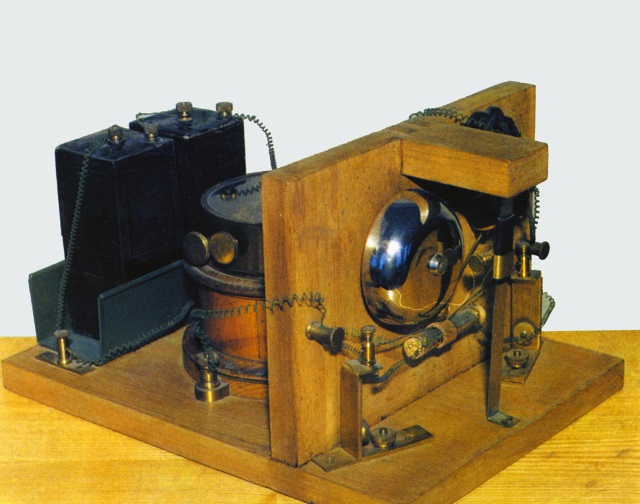 Interesting fact: the first radiogram using Popov’s device was sent on March 24, 1896. The transmission distance was then only 250 meters, and the message text consisted of only two words: “Heinrich Herz” (“Heinrich Hertz”). Thus, Popov paid tribute to Hertz, who in 1888 proved the very fact of the existence of electromagnetic waves.
Interesting fact: the first radiogram using Popov’s device was sent on March 24, 1896. The transmission distance was then only 250 meters, and the message text consisted of only two words: “Heinrich Herz” (“Heinrich Hertz”). Thus, Popov paid tribute to Hertz, who in 1888 proved the very fact of the existence of electromagnetic waves.
Next important stage The development of cellular communications began in 1901, when Marconi, who patented an improved version of Popov’s device, organized the first radio communication in history across the Atlantic Ocean. In the same year, a radio was installed by Marconi on the Thorneycroft steam car, which gave the right direction to the development of mobile communications.
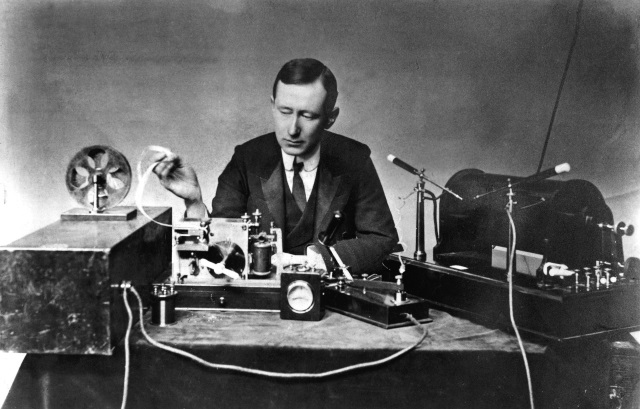
Interesting fact: for the first time across the ocean, Marconi transmitted only one single letter S in Morse code. There was no confirmation of this fact from third-party sources.
Twenty years later, in 1921, Detroit police began using mobile telegraphy for the first time. Working only one way and using a frequency of 2 MHz, the connection allowed dispatchers to coordinate police officers or call them to phone conversation. The technology was finalized 12 years later, when the New York Police Department was the first to use two-way radio communication operating on the Push-To-Talk principle.
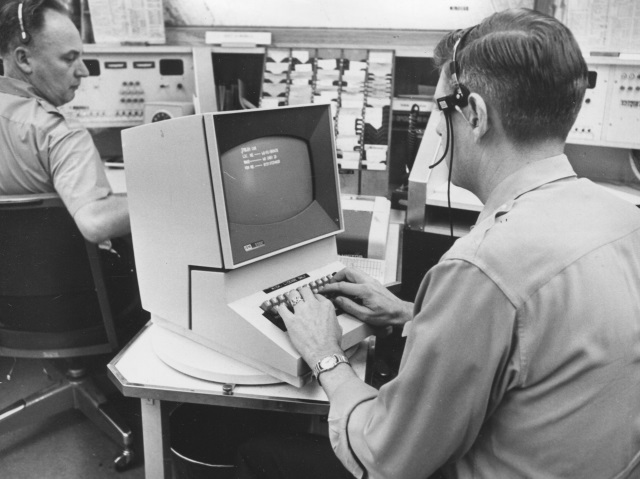
Interesting fact: the operating principle of Push-To-Talk has survived to this day. It is used in most voice messengers like Skype, Mumble, Teamspeak, etc.
The beginning of the cellular era
The Second World War slowed down the development of radiotelephony and, even more so, private mobile communications. But almost immediately after its completion, on June 17, 1946, AT&T and Bell Telephone Laboratories launched the first ever mobile radio network, which could be used by private customers. Of course, everything did not work perfectly, and the equipment needed to communicate with other network subscribers was cumbersome. Just think, a radiotelephone at that time weighed about 30-40 kg and this does not include the power source. Such telephones were installed indoors, and most often in cars, where there was no need to worry about having a separate power source, since the equipment was powered directly from the car’s on-board network. 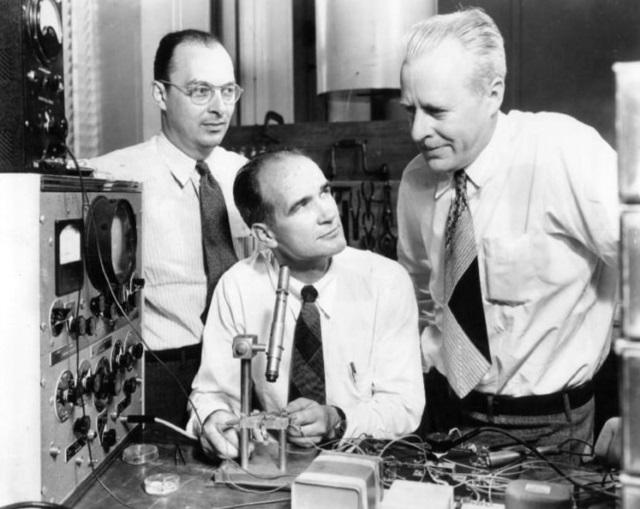 One of the most important dates in the development of cellular communications is considered to be 1947, in which Douglas Ring put forward the idea of the cellular principle of organizing mobile communication networks, essentially inviting the world and his company Bell Laboratories to create a mobile phone. Few would have thought then that the appearance of the first prototype of a portable cell phone was still 25 years away.
One of the most important dates in the development of cellular communications is considered to be 1947, in which Douglas Ring put forward the idea of the cellular principle of organizing mobile communication networks, essentially inviting the world and his company Bell Laboratories to create a mobile phone. Few would have thought then that the appearance of the first prototype of a portable cell phone was still 25 years away.
 Motorola, which has a truly brilliant inventor Martin Cooper on its staff, was responsible for the creation of the first cell phone. It was he who made the call from a device called Motorola DynaTac, which is considered the first call on a mobile phone. The device could truly be called mobile - DynaTac weighed “only” 1.15 kg and had “modest” dimensions of 22.5x12.5x3.75 cm.
Motorola, which has a truly brilliant inventor Martin Cooper on its staff, was responsible for the creation of the first cell phone. It was he who made the call from a device called Motorola DynaTac, which is considered the first call on a mobile phone. The device could truly be called mobile - DynaTac weighed “only” 1.15 kg and had “modest” dimensions of 22.5x12.5x3.75 cm.
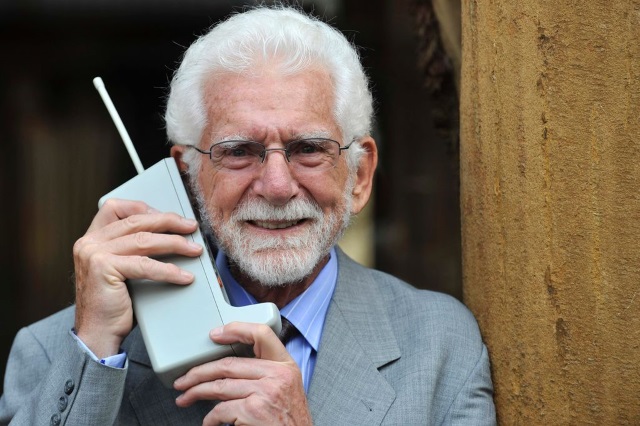
Fun fact: Motorola DynaTac had 12 function keys and a battery that allows the device to operate up to 8 hours in standby mode. DynaTac had to be charged in less than 11 hours.
After this triumphant moment for Motorola, the time has come to deploy cellular networks in various countries. By 1983 cellular networks were deployed in the USA, Japan, Denmark, Sweden, Norway, Finland, Saudi Arabia and some other countries. And even though running networks were ready for use, there was a serious problem - there were no devices on the market that customers of AT&T, NTT, Ericsson and others cellular companies, could use it.
A year later, Motorola released new version your DynaTAC 8000X mobile phone. The device truly amazed consumers, because the gadget allowed them to stay in touch almost anywhere in a large city, while the inconvenience of using it was practically not noticeable at that time. There were huge queues for the DynaTAC 8000X, despite the phone's hefty price tag of $3,995.
![]()
Interesting fact: DynaTAC 8000X has been featured in several films and computer games. Thus, in the cult TV series Breaking Bad, Hector Salamanca speaks using a DynaTAC 8000X.
Almost simultaneously with the launch of Motorola's “affordable” mobile phone, the world's largest countries began to approve national communication standards. The UK has adopted the ETACS system, based on AMPS (Advanced Mobile Phone Service) technology, as a national standard, and the US has adopted the IS-54 digital communications standard (D-AMPS). As for the USSR, the first cellular operator Delta Telecom appeared here in 1991, operating according to the NMT-450 standard.
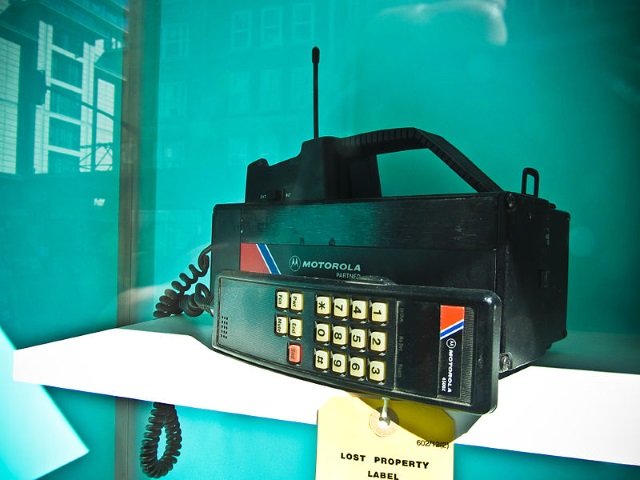
Interesting fact: a minute of conversation for Delta Telecom subscribers was initially $1. Given that the Mobira - MD 59 NB2 phone cost a considerable $4,000, only the wealthiest people could afford to use mobile communications.
The next turning point in the development of cellular communications is the beginning of the GSM era. The GSM standard began to be developed by 26 European national telephone companies back in 1982, after which the European Telecommunications Standards Institute (ETSI) took responsibility for the development of the system in 1989. The specification was published in 1991, at the same time commercial GSM networks began to operate in major European countries. At the same time, the United States went its own way, adopting standards digital technologies TDMA and CDMA.
Mass popularization and further development
Since 1991, the development of cellular communications has accelerated at a breakneck pace. New mobile operators began to open all over the world, investing serious financial resources in the development of new technologies. Thanks to this, the GPRS packet data standard was released in 1999 and millions of cell phone owners gained access to the mobile Internet.
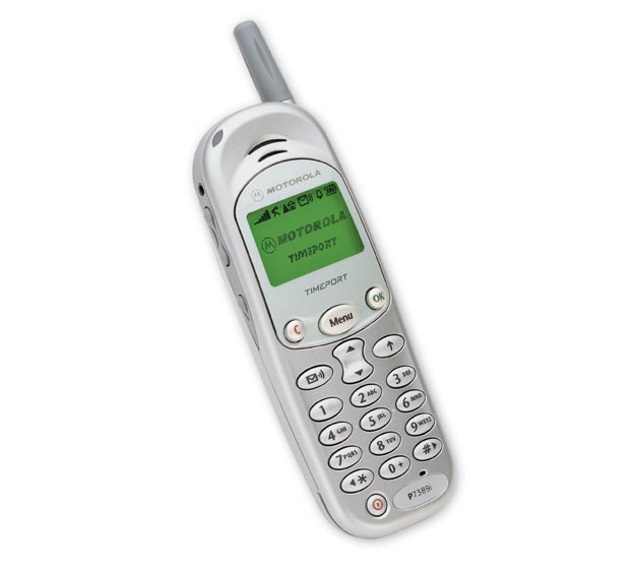 Around the same time, many available phones. The companies that were most successful in saturating the market were Siemens, Ericsson, Sony and Nokia. Most of these companies are now experiencing difficult times. better times, but then they simply had no equal.
Around the same time, many available phones. The companies that were most successful in saturating the market were Siemens, Ericsson, Sony and Nokia. Most of these companies are now experiencing difficult times. better times, but then they simply had no equal.
Interesting fact: Nokia 8110 (located in the image below) is also remembered by people for its “role” in the popular film “The Matrix”. In the future, Nokia has launched two more versions of Nokia 8110 called Nokia 8110i and Nokia 8148.
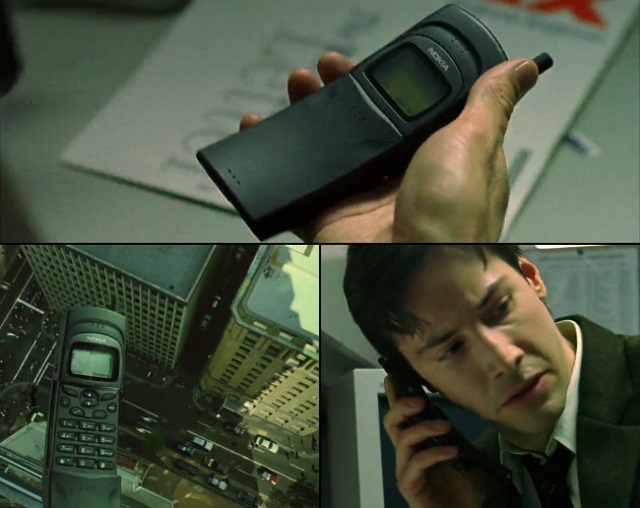
In 2000, the third generation of mobile communications, 3G, was launched, and is still in widespread use today. 3G communication is based on packet data transmission at speeds of up to 3.6 Mbit/s. This speed allows you to watch movies, listen to music and enjoy full access to the global network directly from mobile phones or tablets.
Transitional stage to fourth generation mobile communications, better known as 4G, was the HSDPA protocol, which began to be implemented in 2006. This protocol significantly increased the data transfer speed in mobile networks, the limit of which became 42 Mbit/s.
